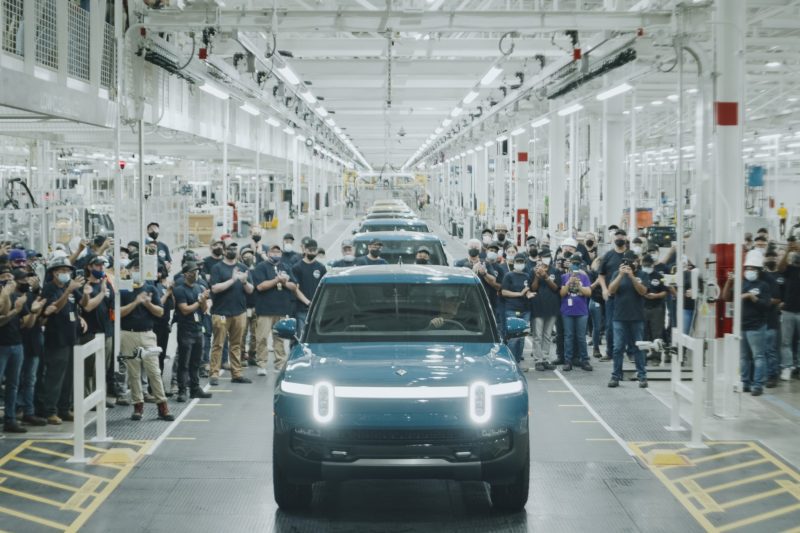Amazon-backed electric vehicle start-up Rivian Automotive has grown its North American pre-orders to approximately 55,400 for its R1T electric ute and R1S electric SUV, which pushes the waiting list out to late-2023 and nudges any possible Australian launch out to 2024 at the earliest.
The impressive details of Rivian’s R1T electric ute and R1S electric SUV – which it unveiled all the way back at the 2018 LA Auto Show – were hidden away in the company’s amended prospectus filed with the United States Securities and Exchange Commission (SEC) this week.
The prospectus comes ahead of the company’s planned public listing on the Nasdaq – which could come as soon as next week – and promises to offer 135 million shares priced somewhere between $US57 and $US62. A further option for underwriters to purchase up to 20.25 million additional shares will be available.
The high end of that range, assuming underwriters purchased all additional shares, would bring in around $US9.6 billion and put a market valuation on the company of as much as $US54.6 billion.
Worth noting, however, that all these numbers could shift around based on actual demand from investors before the company goes public. Sources speaking to CNBC on Monday suggested that the company was actually planning to seek a valuation of more than $US60 billion.
This is still down, however, on the company’s original hopes when it began moving towards a public listing. In June, the company was aiming for a market valuation of around $US70 billion, and in August that had ticked up to approximately $US80 billion.
Regardless of the specifics of how Rivian’s public listing turns out, it’s impressive news for a company that, as of the end of October, had only produced 180 R1Ts and delivered 156 R1Ts – though nearly all of these were delivered to Rivian employees.
Rivian is looking to immediately ramp up production and begin customer deliveries in December, and by the end of the year Rivian aims to have produced approximately 1,200 R1Ts and 25 R1Ss, and to have delivered approximately 1,000 R1Ts and 15 R1Ss.
In fact, the first Rivian R1T electric ute made for a customer only rolled off the factory floor at the EV maker’s production line in Normal, Illinois, back in the middle of September.
What does all of this mean for the potential arrival of the Rivian ute and SUV in Australia? Nothing particularly good, if you were hoping for it to be soon.
Despite the fact that a Rivian R1T in classic “Rivian Blue” and a camouflaged R1S with distinct Rivian badging were seen at Sydney airport back in August, an Australian expansion has continually been pushed back, as North American demand increased.
Any Australian launch is targeted for after the company launches in Europe, which as of August was expected for 2022.
“As of now, we only have plans for the US and Canada, with European preorders to open up sometime next year,” said a company spokesperson writing to local EV enthusiast Jay Hall back in August, adding that “this is not to say that we won’t open up orders to Australia eventually!”
The Rivian spokesperson also explained that, “For what it’s worth, with our future entry to Europe requiring [right hand drive (RHD)] configurations, that will be one less variable to worry about for you all!”
This news was followed in October with an SEC filing which flagged the importance of the Australian market to Rivian’s future success, but which hinted that the R1T and R1S would likely not be launched in Australia until at least 2023.
Considering, however, that North American pre-orders have the company production backlog stretching out to the end of 2023, and a promised European launch to take place before Australia gets its chance, it looks unlikely that Australia would get its first look at an officially launched Rivian until at least some time in 2024.
Joshua S. Hill is a Melbourne-based journalist who has been writing about climate change, clean technology, and electric vehicles for over 15 years. He has been reporting on electric vehicles and clean technologies for Renew Economy and The Driven since 2012. His preferred mode of transport is his feet.

